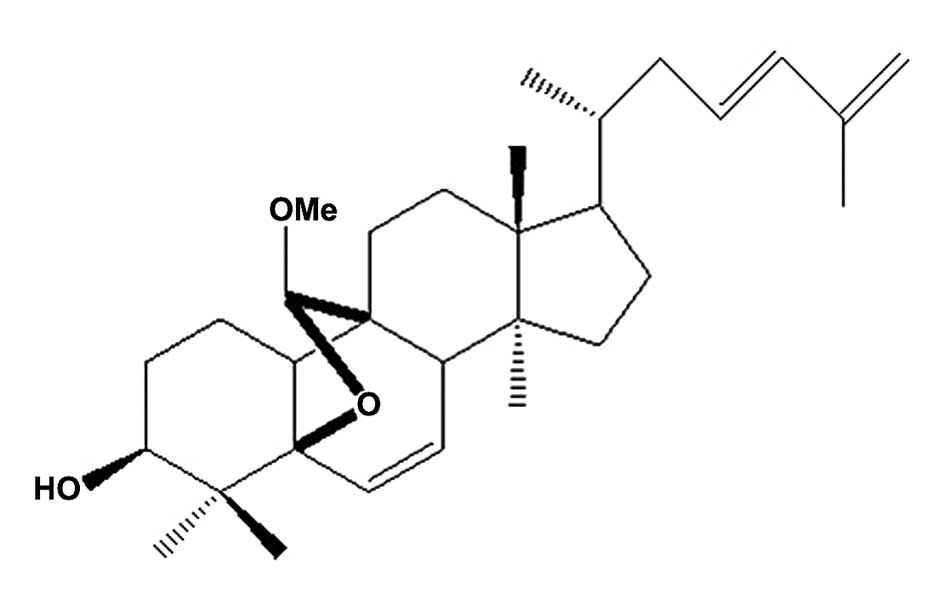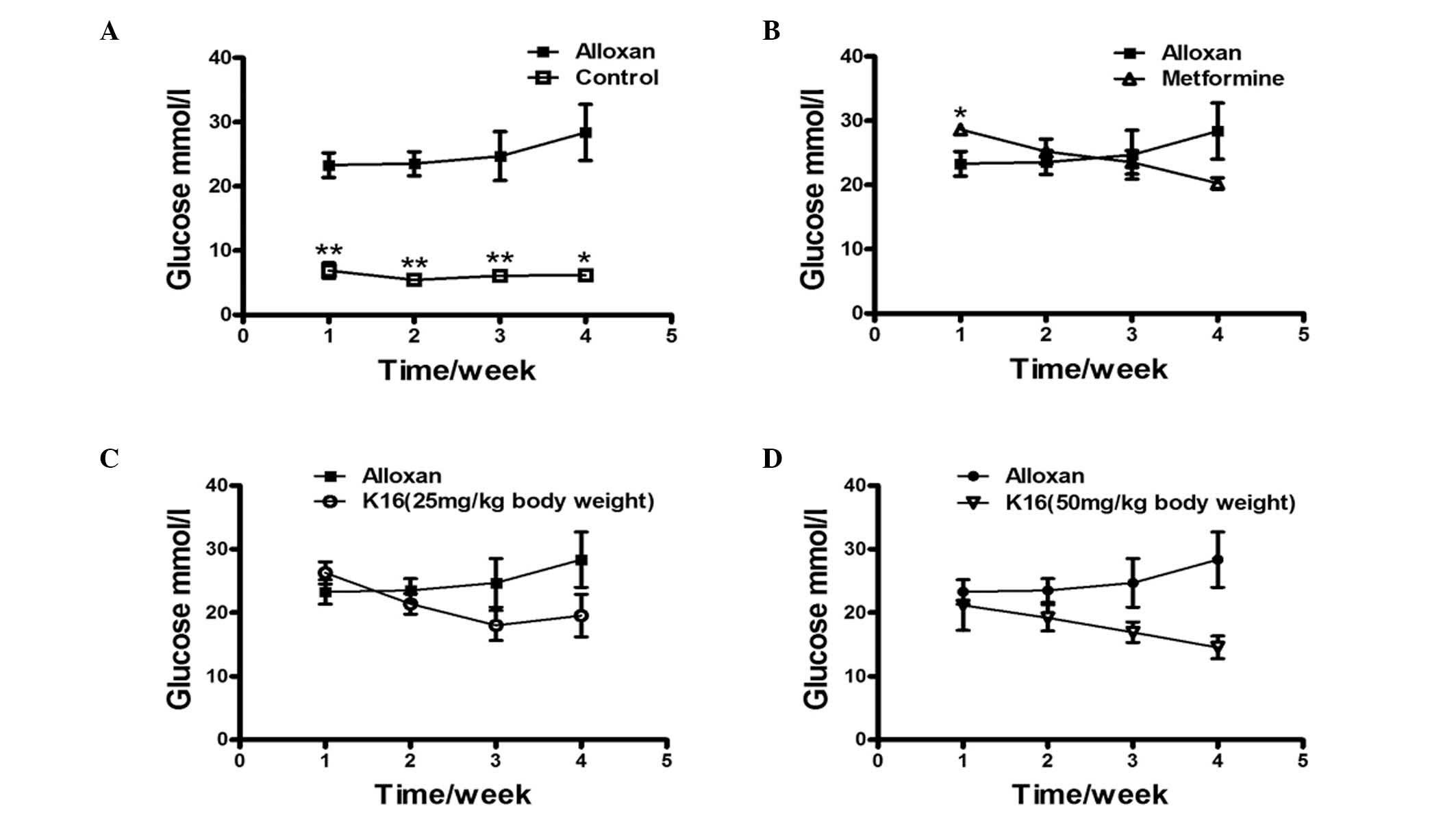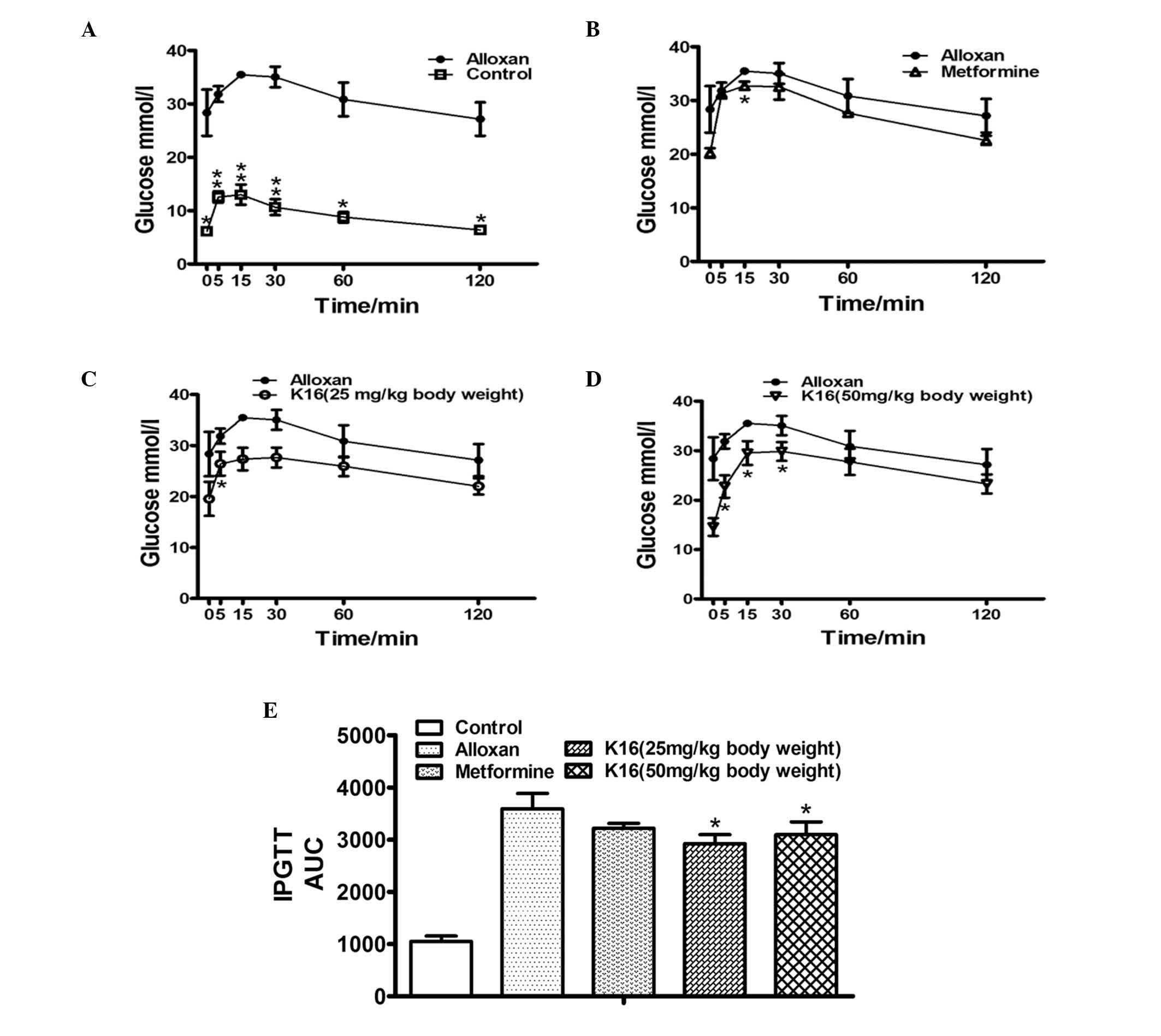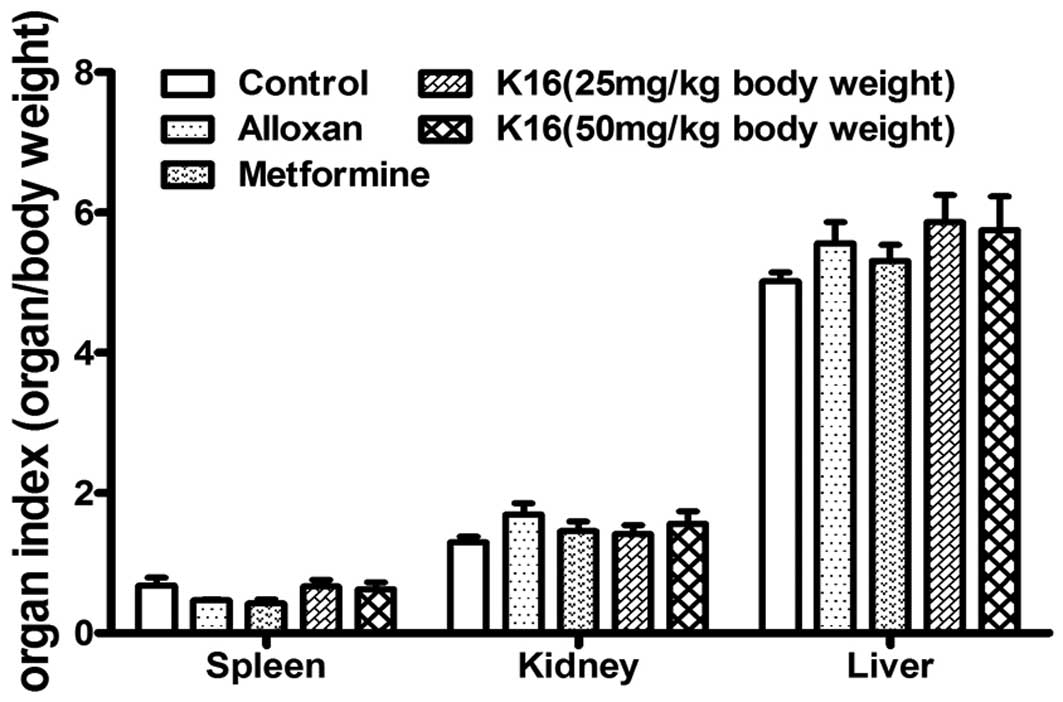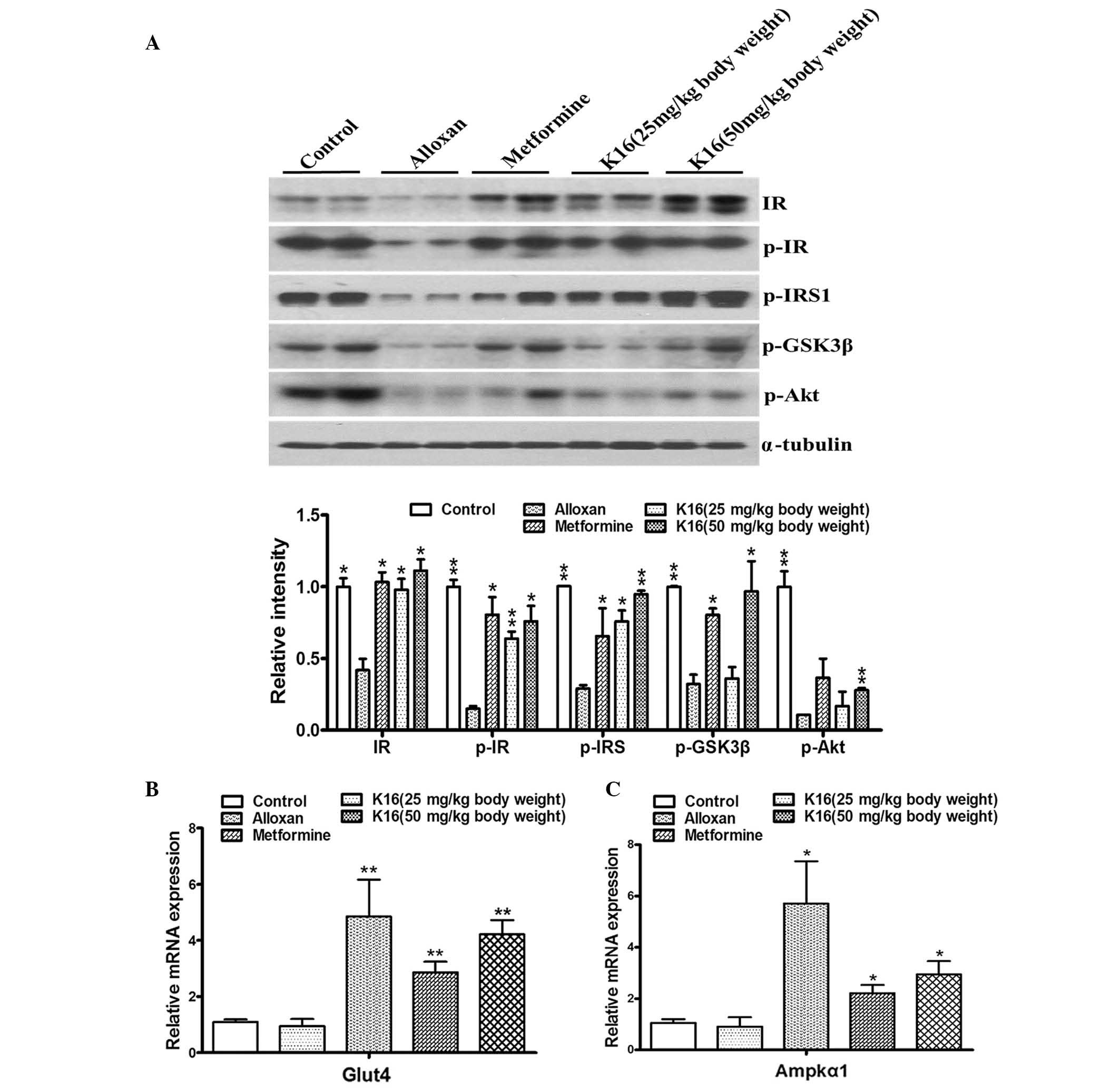|
1
|
World Health Organization, . Diabetes Fact
Sheet. World Health Organization; Geneva: 2015
|
|
2
|
World Health Organization, . Global health
estimates: Deaths by cause, age, sex and country, 2000–2012. World
Health Organization; Geneva: 2014
|
|
3
|
Sharma BR, Kim HJ and Rhyu DY: Caulerpa
lentillifera extract ameliorates insulin resistance and regulates
glucose metabolism in C57BL/KsJ-db/db mice via PI3K/AKT signaling
pathway in myocytes. J Transl Med. 13:622015. View Article : Google Scholar : PubMed/NCBI
|
|
4
|
Grover JK and Yadav SP: Pharmacological
actions and potential uses of Momordica charantia: A review. J
Ethnopharmacol. 93:123–132. 2004. View Article : Google Scholar : PubMed/NCBI
|
|
5
|
Zhu Y, Dong Y, Qian X, Cui F, Guo Q, Zhou
X, Wang Y, Zhang Y and Xiong Z: Effect of superfine grinding on
antidiabetic activity of bitter melon powder. Int J Mol Sci.
13:14203–14218. 2012. View Article : Google Scholar : PubMed/NCBI
|
|
6
|
Iseli TJ, Turner N, Zeng XY, Cooney GJ,
Kraegen EW, Yao S, Ye Y, James DE and Ye JM: Activation of AMPK by
bitter melon triterpenoids involves CaMKKβ. PLoS One. 8:e623092013.
View Article : Google Scholar : PubMed/NCBI
|
|
7
|
Tan MJ, Ye JM, Turner N, Hohnen-Behrens C,
Ke CQ, Tang CP, Chen T, Weiss HC, Gesing ER, Rowland A, et al:
Antidiabetic activities of triterpenoids isolated from bitter melon
associated with activation of the AMPK pathway. Chem Biol.
15:263–273. 2008. View Article : Google Scholar : PubMed/NCBI
|
|
8
|
Chaturvedi P: Antidiabetic potentials of
Momordica charantia: Multiple mechanisms behind the effects. J Med
Food. 15:101–107. 2012. View Article : Google Scholar : PubMed/NCBI
|
|
9
|
Wang X, Sun W, Cao J, Qu H, Bi X and Zhao
Y: Structures of new triterpenoids and cytotoxicity activities of
the isolated major compounds from the fruit of Momordica charantia
L. J Agric Food Chem. 60:3927–3933. 2012. View Article : Google Scholar : PubMed/NCBI
|
|
10
|
Zeng K, He YN, Yang D, Cao JQ, Xia XC,
Zhang SJ, Bi XL and Zhao YQ: New compounds from acid hydrolyzed
products of the fruits of Momordica charantia L. and their
inhibitory activity against protein tyrosine phosphatas 1B. Eur J
Med Chem. 81:176–180. 2014. View Article : Google Scholar : PubMed/NCBI
|
|
11
|
Li Y, Hamasaki T, Nakamichi N, Kashiwagi
T, Komatsu T, Ye J, Teruya K, Abe M, Yan H, Kinjo T, et al:
Suppressive effects of electrolyzed reduced water on
alloxan-induced apoptosis and type 1 diabetes mellitus.
Cytotechnology. 63:119–131. 2011. View Article : Google Scholar : PubMed/NCBI
|
|
12
|
Bi X, Fang W, Wang LS, Stoner GD and Yang
W: Black raspberries inhibit intestinal tumorigenesis in apc1638+/−
and Muc2−/− mouse models of colorectal cancer. Cancer Prev Res
(Phila). 3:1443–1450. 2010. View Article : Google Scholar : PubMed/NCBI
|
|
13
|
Livak KJ and Schmittgen TD: Analysis of
relative gene expression data using real-time quantitative PCR and
the 2(−Delta Delta C(T)) Method. Methods. 25:402–408. 2001.
View Article : Google Scholar : PubMed/NCBI
|
|
14
|
Prabhakar V, Gupta D, Kanade P and
Radhakrishnan M: Diabetes-associated depression: The serotonergic
system as a novel multifunctional target. Indian J Pharmacol.
47:4–10. 2015. View Article : Google Scholar : PubMed/NCBI
|
|
15
|
Alvim RO, Cheuhen MR, Machado SR, Sousa AG
and Santos PC: General aspects of muscle glucose uptake. An Acad
Bras Cienc. 87:351–368. 2015. View Article : Google Scholar : PubMed/NCBI
|
|
16
|
Yang SJ, Choi JM, Park SE, Rhee EJ, Lee
WY, Oh KW, Park SW and Park CY: Preventive effects of bitter melon
(Momordica charantia) against insulin resistance and diabetes are
associated with the inhibition of NF-kappaB and JNK pathways in
high-fat-fed OLETF rats. J Nutr Biochem. 26:234–240. 2015.
View Article : Google Scholar : PubMed/NCBI
|
|
17
|
Lo HY, Ho TY, Li CC, Chen JC, Liu JJ and
Hsiang CY: A novel insulin receptor-binding protein from Momordica
charantia enhances glucose uptake and glucose clearance in vitro
and in vivo through triggering insulin receptor signaling pathway.
J Agric Food Chem. 62:8952–8961. 2014. View Article : Google Scholar : PubMed/NCBI
|
|
18
|
Zheng D, MacLean PS, Pohnert SC, Knight
JB, Olson AL, Winder WW and Dohm GL: Regulation of muscle GLUT-4
transcription by AMP-activated protein kinase. J Appl Physiol
(1985). 91:1073–1083. 2001.PubMed/NCBI
|
|
19
|
Penumathsa SV, Thirunavukkarasu M, Zhan L,
Maulik G, Menon VP, Bagchi D and Maulik N: Resveratrol enhances
GLUT-4 translocation to the caveolar lipid raft fractions through
AMPK/Akt/eNOS signalling pathway in diabetic myocardium. J Cell Mol
Med. 12:2350–2361. 2008. View Article : Google Scholar : PubMed/NCBI
|
|
20
|
Turan B, Tuncay E and Vassort G:
Resveratrol and diabetic cardiac function: Focus on recent in vitro
and in vivo studies. J Bioenerg Biomembr. 44:281–296. 2012.
View Article : Google Scholar : PubMed/NCBI
|
|
21
|
Dasgupta B and Milbrandt J: Resveratrol
stimulates AMP kinase activity in neurons. Proc Natl Acad Sci USA.
104:7217–7222. 2007. View Article : Google Scholar : PubMed/NCBI
|
|
22
|
Wang X, Tian J, Jiang J, Li L, Ying X,
Tian H and Nie M: Effects of green tea or green tea extract on
insulin sensitivity and glycaemic control in populations at risk of
type 2 diabetes mellitus: A systematic review and meta-analysis of
randomised controlled trials. J Hum Nutr Diet. 27:501–512. 2014.
View Article : Google Scholar : PubMed/NCBI
|
|
23
|
Ozcan U, Cao Q, Yilmaz E, Lee AH, Iwakoshi
NN, Ozdelen E, Tuncman G, Görgün C, Glimcher LH and Hotamisligil
GS: Endoplasmic reticulum stress links obesity, insulin action, and
type 2 diabetes. Science. 306:457–461. 2004. View Article : Google Scholar : PubMed/NCBI
|
|
24
|
Embi N, Rylatt DB and Cohen P: Glycogen
synthase kinase-3 from rabbit skeletal muscle. Separation from
cyclic-AMP-dependent protein kinase and phosphorylase kinase. Eur J
Biochem. 107:519–527. 1980. View Article : Google Scholar : PubMed/NCBI
|
|
25
|
de Figueiredo Souto Padron A, Salmon AB,
Bruno F, Jimenez F, Martinez HG, Halade GV, Ahuja SS, Clark RA,
DeFronzo RA, Abboud HE and El Jamali A: Nox2 mediates skeletal
muscle insulin resistance induced by a high-fat diet. J Biol Chem.
290:13427–13439. 2015. View Article : Google Scholar : PubMed/NCBI
|
|
26
|
Shih CC, Lin CH, Lin WL and Wu JB:
Momordica charantia extract on insulin resistance and the skeletal
muscle GLUT4 protein in fructose-fed rats. J Ethnopharmacol.
123:82–90. 2009. View Article : Google Scholar : PubMed/NCBI
|
|
27
|
Huang S and Czech MP: The GLUT4 glucose
transporter. Cell Metab. 5:237–252. 2007. View Article : Google Scholar : PubMed/NCBI
|
|
28
|
Cheng HL, Huang HK, Chang CI, Tsai CP and
Chou CH: A cell-based screening identifies compounds from the stem
of Momordica charantia that overcome insulin resistance and
activate AMP-activated protein kinase. J Agric Food Chem.
56:6835–6843. 2008. View Article : Google Scholar : PubMed/NCBI
|
|
29
|
McCarty MF: Does bitter melon contain an
activator of AMP-activated kinase? Med Hypotheses. 63:340–343.
2004. View Article : Google Scholar : PubMed/NCBI
|
|
30
|
Jiang Q, Takemori AE, Sultana M,
Portoghese PS, Bowen WD, Mosberg HI and Porreca F: Differential
antagonism of opioid delta antinociception by [D-Ala2, Leu5,
Cys6]enkephalin and naltrindole 5′-isothiocyanate: Evidence for
delta receptor subtypes. J Pharmacol Exp Ther. 257:1069–1075.
1991.PubMed/NCBI
|



